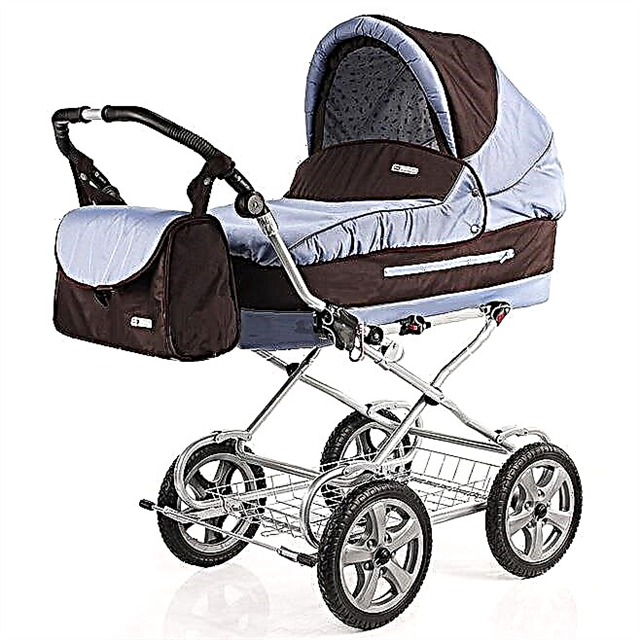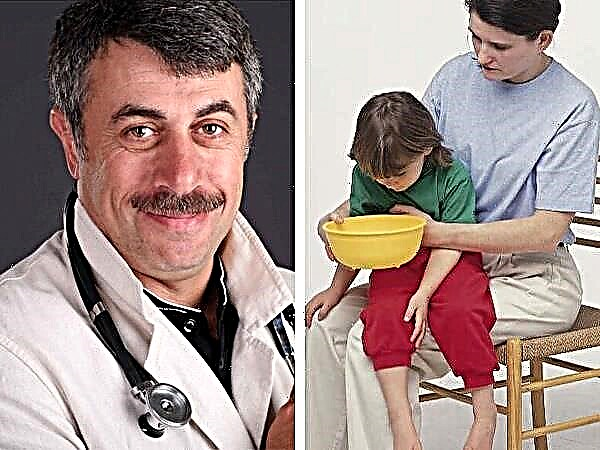Mom is with her daughter from the first minutes of her life, she goes through all the stages of growing up with her. And, of course, one of the important stages in a girl's life is puberty and the first menstruation. What are the signs of the first menstruation in girls? What is the right way to tell her about them? At what age does the first period start and how long does it last? What does the first period look like? We will try to answer these questions in this article.
Sexual development
The problem of puberty in Russia is relevant in our time. It so happened that in many Russian families, discussions with children on issues of sexual development, marriage, childbirth are left behind the scenes. But not only parents, but also teachers in schools need to conduct conversations with children, schoolchildren, striving for competent sex education of our descendants.
Puberty, as a physiological process, proceeds in a certain sequence.
In the prepubertal period, there is a rapid growth and the appearance of the first signs of a feminine figure: the hips are rounded as a result of growth and a uniform redistribution of fatty tissue, a female pelvis is formed. Many girls start to feel embarrassed about such changes. Therefore, during this important and responsible period, mother needs to talk very gently and carefully with the girl about sexual development.
In the phase of puberty (10-12 years), the growth of mammary glands occurs, which is called thelarche; pubic hair begins to grow (11 years - 12 years) - this is called pubarche. The end is the onset of the first menstruation - menarche (menstruation begins in girls at the age of about 12-13 years), which coincides with the completion of the growth of the body in length.
What is your period (menstruation)?
Menstruation, and from the medical side - menstruation, is a rejection of the endometrium (the mucous membrane of the inner layer of the uterus), a rhythmic process that repeats at regular intervals. Menstruation is the end of the physiological process - the menstrual cycle, which lasts 3 to 4 weeks.

During sexual growth, gonadotropic hormones (FSH-follicle-stimulating hormone and LH-luteinizing hormone) begin to be produced in the hypothalamus and pituitary gland, which trigger the mechanism of follicle growth, the production of steroids and the maturation of the egg. In the mucous membranes of the uterus, vagina, cervical canal, cyclical changes occur, corresponding to the phases of the menstrual cycle.
Cycle phases
The menstrual cycle has several phases:
- the phase of endometrial rejection, which has individual periods of duration from one day to several days. This is a very complex process, followed immediately by the growth of the endometrium, which occurs with extraordinary speed;
- then the proliferation phase begins (with a normal 4-day cycle) begins from the 5th day and lasts until the 14th day of the menstrual cycle. Every day the process of growth of the endometrium increases, and by the end of the proliferation phase, the growth of the endometrium in thickness reaches a maximum;
- after the proliferation phase, the secretion phase begins from the 15th to the 28th day of the menstrual cycle. In this phase, the growth of the endometrium stops and it begins to prepare for the acceptance of a fertilized egg, or for rejection (in case the fertilization of the egg has not occurred).
It should be noted that menstruation is not only changes that occur in the genital organ - the uterus, but manifestations of changes in the whole organism.
Changes in the body
Before the onset of menstruation, the body signals this various manifestations, among them:
- pulling pain in the lower back and sacrum;
- headache;
- feeling overwhelmed;
- tension in the nipples;
- increase in body weight;
- in many girls and girls, a few days before the onset of menstruation, the discharge of profuse mucous secretions begins;
- possible, but not always, an increase in body temperature, fluctuations in blood pressure.
In addition to the above changes, the first signs of menstruation in girls can be manifested by changes in the psychological sphere: weakening of memory, irritability, tearfulness, insomnia.
The amount of blood released during menstruation, on average, ranges from 50 ml to 150 ml. Menstrual blood is darker than arterial or venous.
The first 1.5 years after menarche, the frequency of cycles with ovulation (that is, the cycles in which the egg matures) reaches 60%. In 1/3 of girls, the first 3 - 5 years after menarche, menstrual cycles are characterized by insufficiency of the corpus luteum, but most often the cycles are anovulatonic. This explains the high incidence of dysfunctional uterine bleeding at puberty.
What factors affect puberty (the onset of menstruation) and at what age do girls begin their periods?
It should be said that a large number of factors influence the onset and course of puberty. These include hereditary (race, nation), constitutional factors, health status, body weight.
 For example, in girls with a large body weight, menstruation occurs earlier, in contrast to their peers, who have a lower body weight.
For example, in girls with a large body weight, menstruation occurs earlier, in contrast to their peers, who have a lower body weight.
To the question, at what time then, on average, does the girl start her period, there is an answer: when the body weight reaches 47.8 + -0.5 kg, when the fat layer is 22% of the total body weight (on average 12-13 years )
In addition to these factors, the onset and course of sexual development is influenced by other factors (external): climatic (illumination, altitude, geographical location) and balanced nutrition (with a sufficient content of proteins, fats, carbohydrates, trace elements and vitamins).
Also sources can be diseases such as heart disease with heart failure, tonsillitis, severe gastrointestinal diseases with malabsorption of nutrients, kidney failure, liver failure. All these conditions weaken the girl's body, inhibiting the normal course of the puberty process.
How many days are the first periods?
According to the World Health Organization, 38% of girls had their menstrual cycle from menarche to the second menstruation for more than 40 days, 10% for more than 60 days, and 20% for 20 days.
The duration of the first menstruation is from 2 to 7 days, but it can take longer, up to 2 weeks, and on average a girl uses 3 to 6 pads. But usually the first menstruation in girls is abundant and long.
And what does Doctor Komarovsky say?
In an article by the well-known children's doctor Komarovsky OE, it is said that the final setting of the menstrual cycle takes from 8 to 12 years, and in a larger number of adolescents, its duration is from 21 to 45 days.
The first three years, the menstrual cycle, on average, is 28 - 35 days, but with age, it shortens, which is associated with the work of the ovaries.
Allocate the following fluctuations in the menstrual cycle in adolescents:
- the first year after menarche - 23 - 90 days;
- the fourth year - 24 - 50 days;
- seventh year - 27 - 38 days.
All this suggests that the menstrual cycle, individual for each girl, girl, is finally established by the age of 19 - 20 and should not begin and end in the same way for everyone!
What should parents pay attention to?
It should be noted that there are signs and conditions that should alert parents and force them to consult a specialist in a timely manner.

These include:
- absence of menstruation for 6 months;
- symptoms of an endocrine system disorder (diabetes mellitus, obesity);
- polycystic ovaries;
- active sports (which is often found in girls 12 years old);
- loss or lack of appetite, or vice versa, when girls begin to increase their appetite;
- taking certain medications, drugs;
- tumors of the pituitary gland, ovaries, adrenal glands;
- blood diseases.
Exists menstrual irregularities:
- amenorrheawhen there are no monthly periods for more than 3 months (it should be said that there is a physiological absence of menstruation during pregnancy and breastfeeding, and in other cases amenorrhea is pathological and requires treatment);
- oligomenorrhea - the interval between menstruation is more than 35 days;
- polymenorrhea - the interval is less than 22 days;
- hypomenorrhea - the duration of bloody discharge is less than 3 days;
- hypermenorrhea - more than 7 - 10 days;
- menorrhagiawhen spotting lasts 10-14 days or more;
- opsomenorrhea - rare with an interval of more than 35 days and scanty periods.
Stress has a big impact on setting the menstrual cycle. If a girl is constantly exposed to stress (at home, at the institute when passing the session), her periods may be delayed, scarce or completely absent, this is the so-called stress amenorrhea.
It should be noted that menstruation can begin before the age of twelve, at the age of 8, the so-called early menstruation. This will not be considered a pathology if the girl's mother, grandmother had the same thing (there is a genetic factor), however, such an early onset of menstruation may be a sign of pathology (concomitant diseases, stress, pituitary tumors, and others).
And it happens that the first menstruation begins and later: at the age of 16 - 18 years. The reasons for the late onset of menstruation can be a lack of body weight, pituitary tumors, previous infectious diseases (measles, rubella), stress, psycho-emotional overstrain.
Is it better to use pads or tampons?
When our grandmothers had their period, they used gauze, rags, then washed and reused them.
 In the modern world, a huge number of pads and tampons have been developed and introduced into wide use.
In the modern world, a huge number of pads and tampons have been developed and introduced into wide use.
This is really very convenient, because using them allows you to continue to lead an active life without fear that something will leak somewhere. The question remains, which is better to use: tampons or pads.
It must be said that the use of pads is safer than tampons, because when using cotton cylinders, it is necessary to observe safety and hygiene measures.
The tampon can be left in the vagina for no more than 2 hours, and longer use creates a favorable environment for the growth of pathogens.
Psychologist's advice
Here several recommendations of a psychologist on how to tell a girl about her first period:
- Since a girl's first blood may appear not at 12 years old, but at 11 years old, and sometimes at 10 years old, it is necessary to tell the girl about her period in advance.
- It is necessary to take a closer look at the child, how actively he shows interest in the "forbidden" topics.
- It is necessary to find suitable literature, where it is explained in an accessible language how to tell a girl about her period and at what age they should start (books, magazines, video lectures).
Common questions of teenage girls: "Does it hurt?", "How much discharge is there?", "How long is the first period?"
Try to explain that the harbingers of the first menstruation are unpleasant sensations and moderate pulling pains in the lower abdomen. The discharge flows out evenly, sometimes in the form of clots, lasting several days (for example, if her period began on December 1, then her next period will begin on December 28).
When the girl's age approaches 11 - 12 years, she begins to wait for her period. During this period, you can purchase hygiene products - pads or tampons. If the girl is not yet sexually active, then these will, of course, be pads. It is necessary to explain to the girl that the pads need to be changed every 3 - 4 hours or as they become dirty, take a shower twice a day (in the morning and in the evening) and wash with each change of the pads.
In addition, explain to the girl that the beginning of her period indicates that there is a possibility of pregnancy, and from this stage the girl should be more responsible for her health and life.



